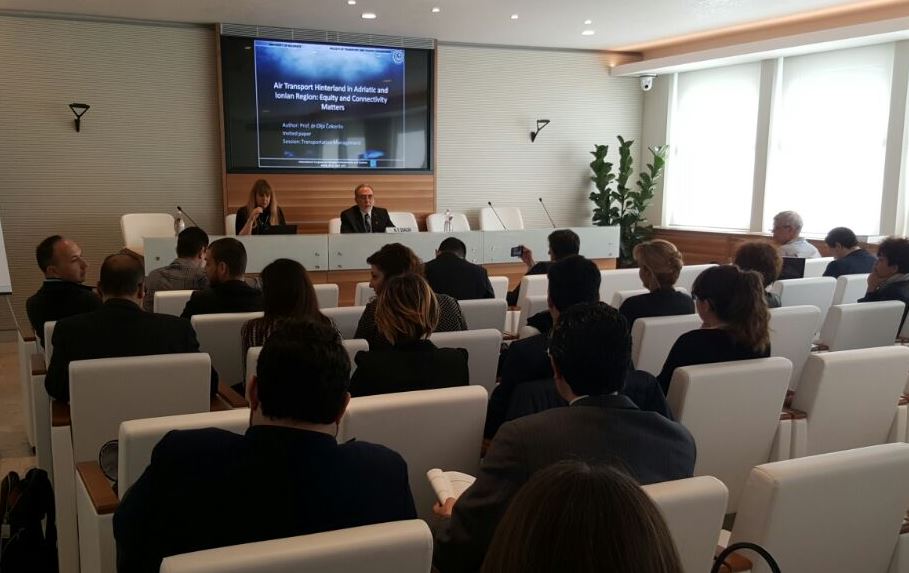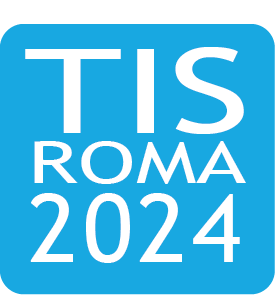TIS 2017
Session 4 – Transportation Management

Various and interesting topics regarding new approaches to Transportation Systems were presented and discussed during the 4th session of the TIS Congress chaired by Nicolau Fares Gualta. In particular, the relevance of equity and connectivity, the aspects of social valuation were focused in a first part of the session, while the second part focused on the problems of risk management for transport corridors.
Olja Čokorilo, Air Transport Hinterland in Adriatic and Ionian Region: Equity and Connectivity Matters – An analysis of existing infrastructure, connections and available aircraft fleet capacities was presented, aiming to develop a comprehensive transport platform in accordance with transport policy as a tool for strategic planning. The overall objective of the research is to contribute to expanded, improved and safer air transport networks for the Adriatic and Ionian region development.
Miriam Pirra, Marco Diana e Alberto Castro, Information provision in public transport: indicators and benchmarking across Europe – The researchers presented the results of EU project METPEX in the improvement of the measurement of the quality of transport services. Several different indicators are proposed to represent detailed aspects related to the perceived quality of transport services, in particular focusing on quality of information provision services. The results show the added value of separately considering the quality of information provision at different stages of the journey experience.
Saverio Miccoli, Fabrizio Finucci e Rocco Murro, Shared Infrastructures: Technique And Method For An Inclusive Social Valuation – It was showed an inclusive evaluation technique, that goes beyond the most consolidated social consultations, seeking the direct and conscious deliberation of individuals involved. The technique combines deliberative methods, based on information, opinions and community debates, with a social multi-dimensional valuation, on multi-criteria basis, aimed at considering the different design alternatives, a number of criteria sets and their order of priority, the array of impacts that the infrastructure to be assessed produces on environmental, social and economic dimensions of a territory.
Uwe Reiter, Igor Majstorović, Ana Olmeda Clemares and Gregor Pretnar, Development and application of national transport model of Croatia – The reaserch group presented a National Model aimed to identify shortcomings, bottlenecks and issues in the current and the planned future transport systems of Croatia. The model is used to identify specific measures and projects for the different transport modes and their integration supporting the selected strategies. The National Transport Model is a basic and important component for the development of the future National Transport Strategy, delivering the necessary quantitative basis for analyses and selection of alternatives. Furthermore, it forms the basis for the development of Regional and Urban Models.
Roberta Pellicani, Ilenia Argentiero and Giuseppe Spilotro, Instability exposure and risk assessment of strategic road corridors in a geomorphologically complex territory – This study is aimed to analyze the vulnerability and exposure of the road corridors of Matera Province (Basilicata Region, Southern Italy) to landslide phenomena. These road corridors and their relative vehicular traffic are continuously exposed to instability processes, characterized both by high intensity and low frequency and by low intensity and high frequency. The risk assessment model was developed considering the exposure in terms of amount of traffic and the vulnerability in function of the presence of criticalities along roads. The classification of the road sections in terms of risk levels represent a support for decision making and allows to identify the priorities for designing appropriate landslide mitigation plans.
David Stanley, Paolo Mazzanti, Paul Thompson and Darren Beckstrand, Geotechnical Asset Management for Italian Transport Agencies: Implementation Principles and Concepts – Geotechnical asset management (GAM) can contribute to improve the condition, utility, safety and life cycle cost of a transportation network. GAM will assist transport agencies to understand the current and future condition of geotechnical assets, and through integrated life cycle cost and risk analysis, the alternative actions available to rehabilitate, preserve and eventually replace assets. Geotechnical asset management offers guidance in supporting decision-making to preserve and improve the transport system.
Also the following presentation was scheduled, but speakers could not be present for unpredictable reasons:
Valentin Silyanov and Jamshid Sodikov, Highway Functional Classification In Cis Countries – Road infrastructure are not only costly to build but also expensive to maintain in order to adequately meet public expectation. Authors are suggesting highway functional classification which takes into account not only technical (or administrative) classification but also functional classification. Recommended functional classification requires justification in parameters such as travel speed, efficient movement of people and goods, riding comfort, environmental and landscape issues. The parameters were estimated by utilising Analytical Hierarchy Process.
CHAIRMAN: Nicolau Fares Gualda
